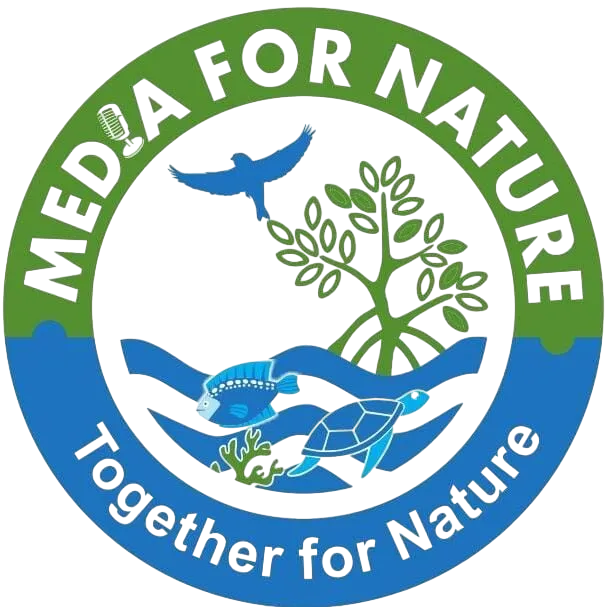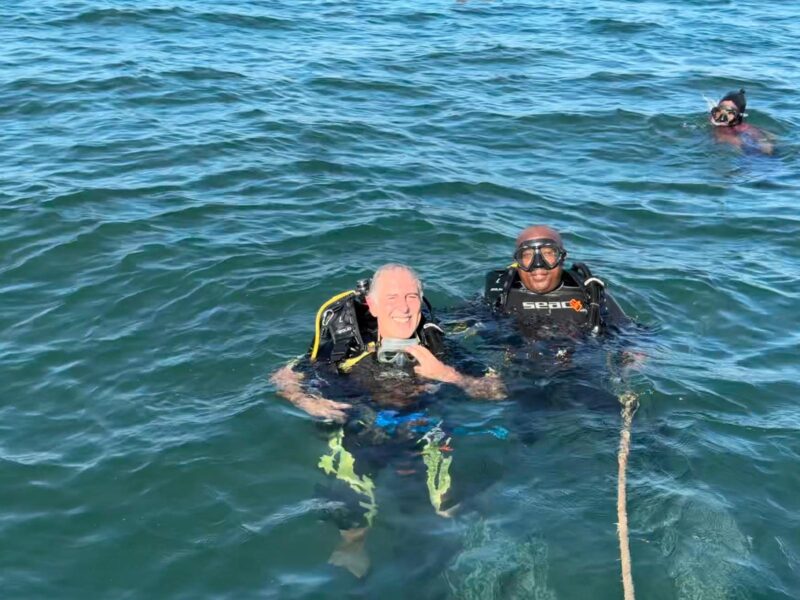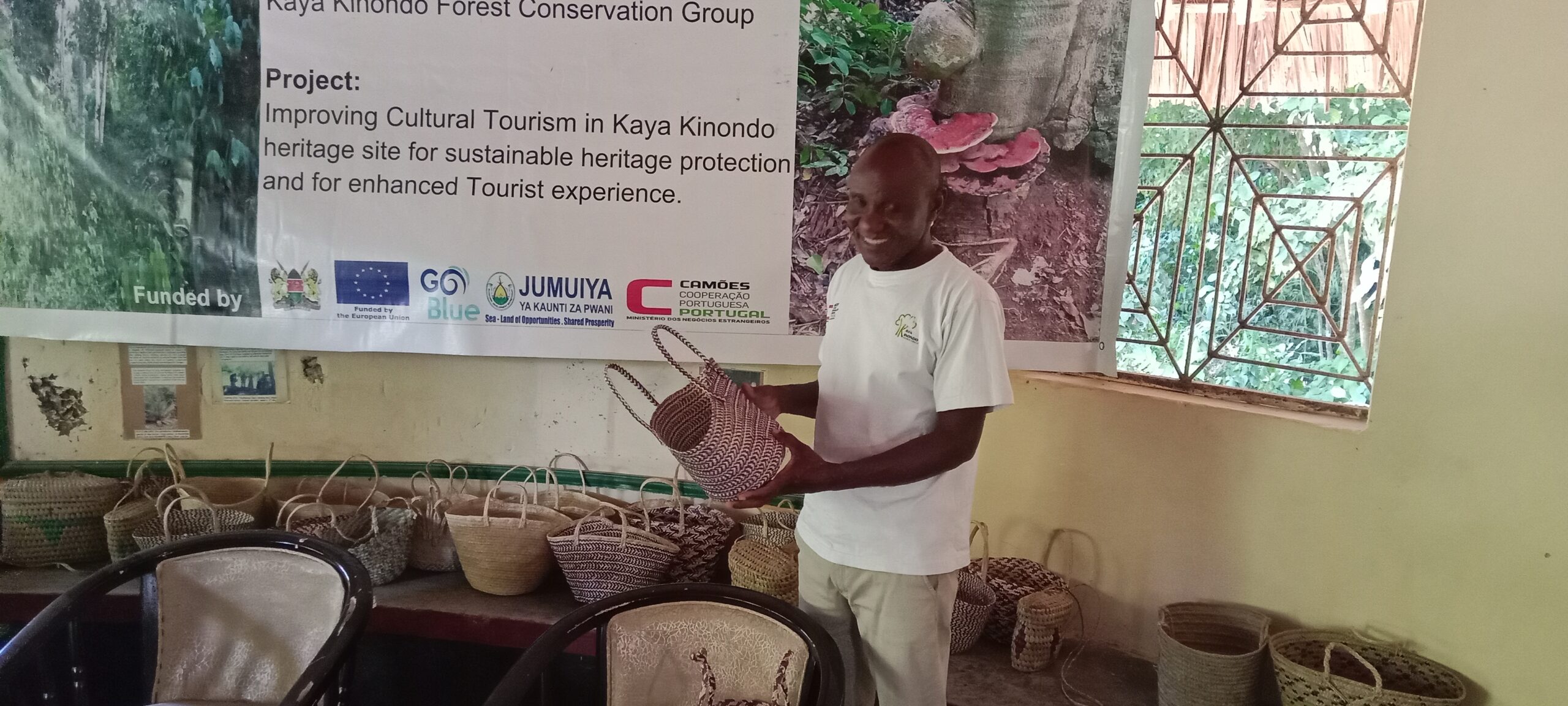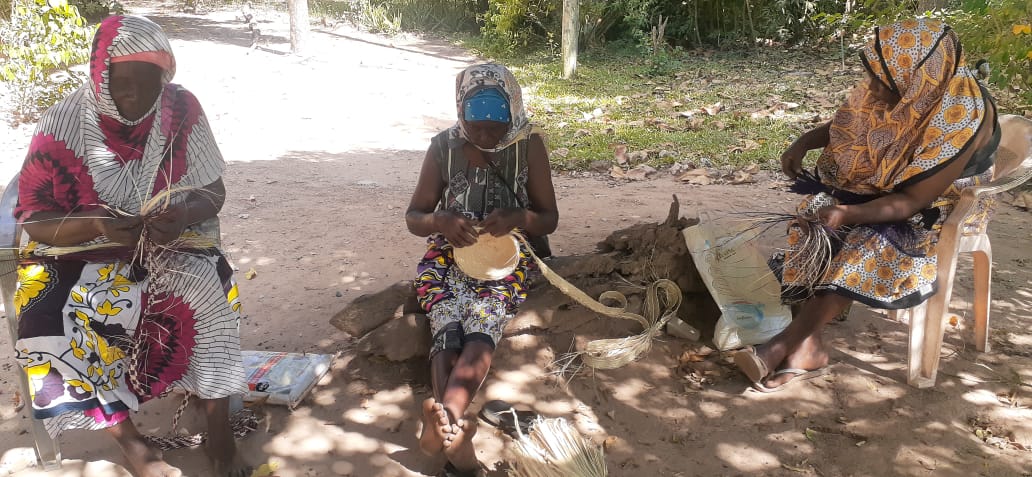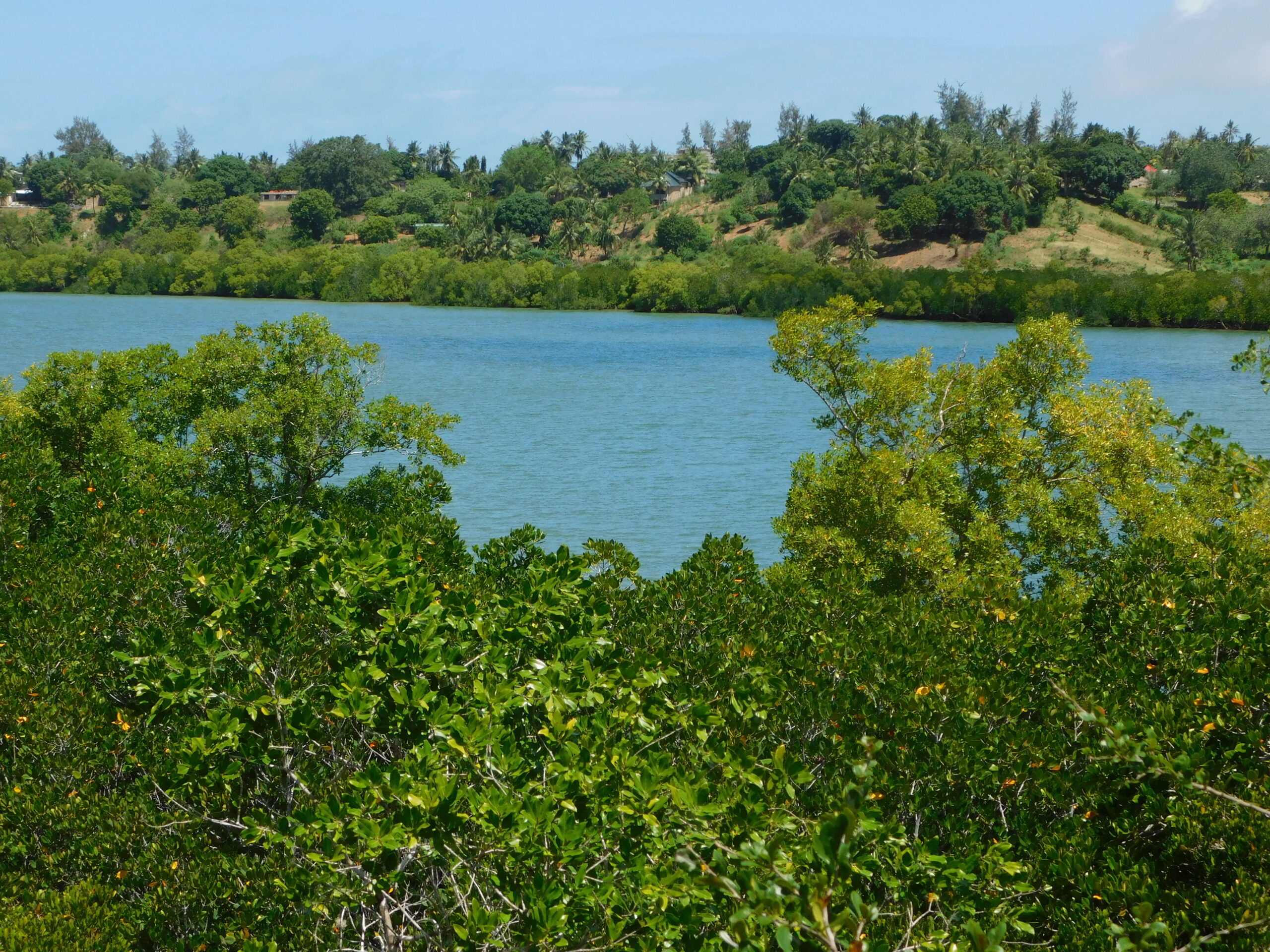Ceasar and Filipe dive at Ngomeni | Photo by Caesar Bita
History is replete with adventures and misadventures but one that is currently the subject of a major archaeological study is the mishap in the Vasco Da Gama fleet of the 16th Century along the Kenyan Coast.
Vasco da Gama came to today’s Kenya in 1499, on his first trip and again on his second trip, in 1502. Later, in 1524, he came again through the coast and lost one ship, a Galleon, which was part of his fleet.
Many years later, in 2003, locals in the sleepy village of Ngomeni, north of Malindi town, reported of submerged site that Kenyan archaeologists discovered was a shipwreck. This shipwreck that bore the hallmark of the Vasco da Gama Galleon has generated a lot of interest from Portuguese scholars.
The location of the shipwreck has now thrown the small fishing village of Ngomeni, in Kenya’s north coast into international limelight attracting globally acclaimed scholars, some of whom have already flown to the area to explore ways of undertaking further archaeological work on the shipwreck.
Media For Nature had the privilege of talking to Professor Filipe Castro from Portugal, a globally respected scholar of underwater archaeology, who was in Ngomeni, Kenya in pursuit of the Portuguese Galleon ship.
According to Dr. Caesar Bita, the Head of Underwater Archaeology at the National Museums of Kenya (NMK), Professor’s Castro specializes in ancient shipbuilding technology and is the only renowned scholar of Vasco da Gama era shipwrecks.
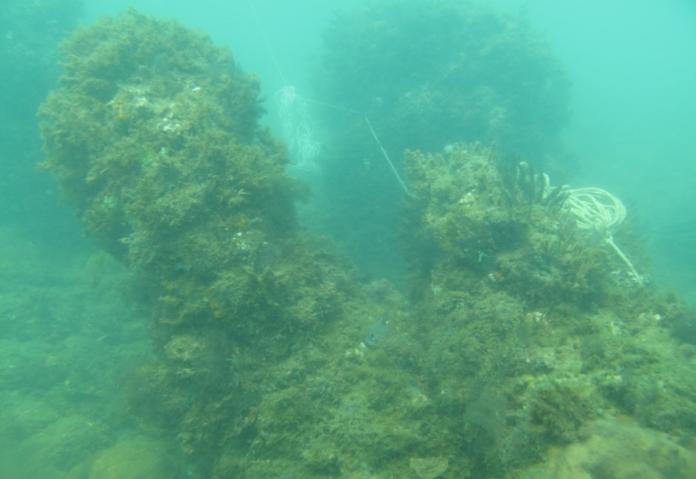
The shipwreck | Photo by Caesar Bita
Professor Castro is from the Centre for Functional Ecology at the University of Coimbra in Portugal.
According to Prof. Castro, the Ngomeni shipwreck is a likely galleon, the S, Jorge that was part of the Vasco Gama fleet and lost in Malindi. “This Galleon, the S. Jorge, is one of the earliest galleons ever built”.
Galleons were developed by the Portuguese after 1518, as warships for the Indian Ocean and never ceased to evolve since. We don’t know how they looked like in the beginning, but by the mid-16th century they are represented in manuscripts and they look enormous and strong.
About Galleons
Galleons were large, multi-decked sailing ships first used as armed cargo carriers by Europeans from the 16th to 18th centuries during the age of sail and were the principal vessels drafted for use as warships until the Anglo-Dutch Wars of the mid-1600s.
Professor Castro who was in Kenya for the first time says Malindi is a very important reference in navigation history with its cosmopolitan nature dating way back over five centuries.
“To find an early galleon would be every archaeologist’s dream. If the Ngomeni shipwreck is the galleon S. Jorge, it is a precious piece of history. The fact that it may be a testimony to Vasco da Gama’s last trip only adds to the value of this ship.
“We are currently studying all the shipwreck accounts of Portuguese losses in the vicinity of Malindi. There are three, and S. Jorge seems to be the most plausible identity for this shipwreck,” he said.
He added, “Dr. Jose Virgílio Pissarra, a Portuguese historian, and he had another five Portuguese shipwrecks on the coast of Kenya, that could have been lost at Malindi. Only an excavation can answer our questions.”
The benefits to the country, Kenya and to the residents of Ngomeni from the find are immeasurable especially from scholars and tourists. This will result to enormous development in the region.
“That the Portuguese will be interested in the shipwreck on the coast of Kenya, means the world. Personally, I know the theory about the Vasco Da Gama fleet and galleons, but coming here is a childhood dream coming true.” Castro says
He said information about such discoveries is scanty adding that through a robust archaeological work on the shipwreck, a lot of information could be generated to enrich tourism, research and academia.
Dr Bita says Prof. Castro’s visit is a blessing to Kenya.
“Considering that our Ngomeni shipwreck is likely a Portuguese Galleon, his visit to the site and his confirmation that this is truly a Portuguese Galleon is a big discovery for the world.
“This is because no other Galleon has been discovered in the world. It is expected that this will raise great international interest that will spur more research and study of the site.
“Following his visit, we are now developing a joint project to excavate the shipwreck and publish more on the Ngomeni shipwreck. Ultimately, the results of these studies and the fact that this is the first Galleon to be discovered in the world will lead to increased tourism. The government of Kenya through the National Museums of Kenya has always held the ambition of opening an underwater museum in Ngomeni. This is the likely dream come true for the country. The opening of an interpretation center for the shipwreck in Ngomeni will open the village for growth. Eventually Ngomeni will no longer be the sleepy impoverished village but will become a tourism hub,” he said.
Dr Bita said the local community of Ngomeni stand to benefit enormously from the Ngomeni shipwreck ranging from academic opportunities where local youth can be involved in archaeology, museology and conservation.
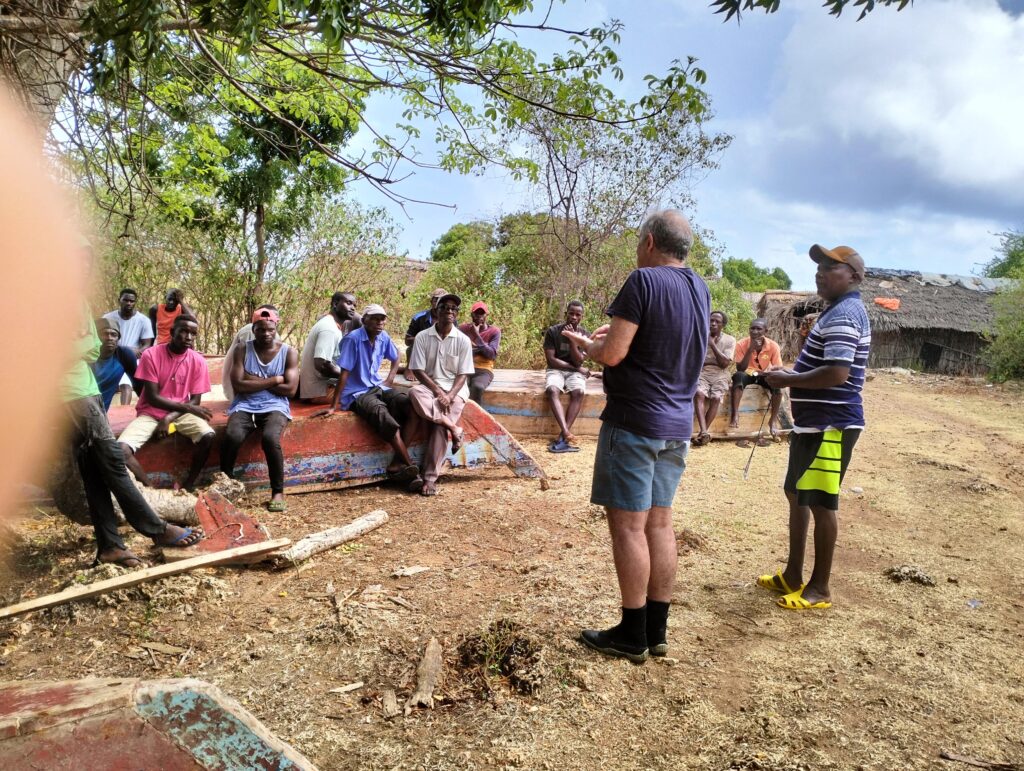
Prof. Castro interacting with locals | Photo by Caesar Bita
These can happen in exchange programs.
“The opening of a museum in the area will lead to either direct or indirect employment. There will be growth of support businesses including tour guiding, taxi services and hotels that will also provide employment. The Ngomeni project will also involve schools.
“With the projected growth, it is expected that social welfare of the people of Ngomeni will greatly improve. Issues such as crime will significantly reduce since the youth will be gainfully engaged,” he added.
Ngomeni Beach Management Unit (BMU) Chairperson Said Mote welcomed the project saying it will have immense contribution to the growth of the area’s economy.
“We are ready to receive the experts and tourists because this will mean more business to the predominantly fishing community to start other activities such as tour guiding and hospitality,” he said.
